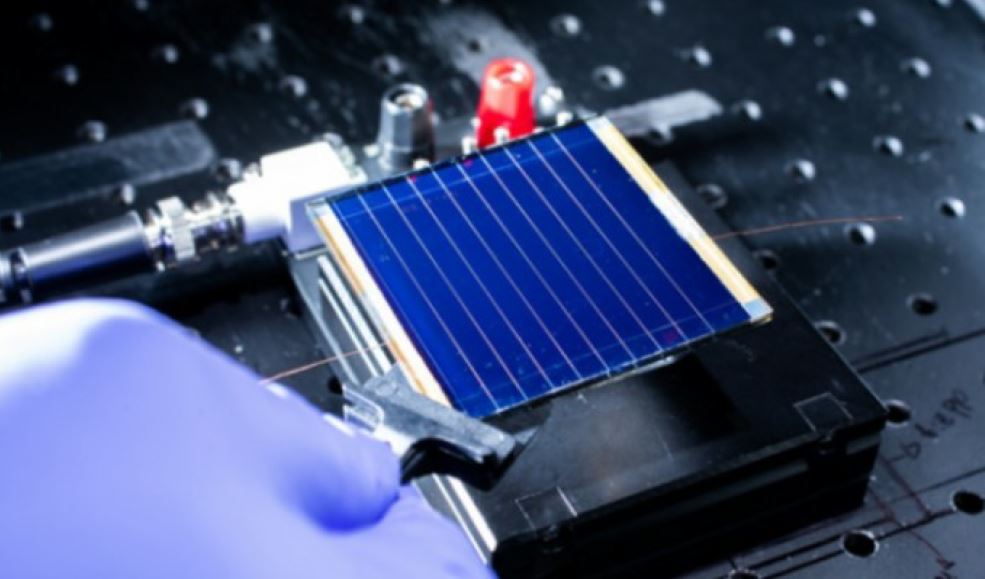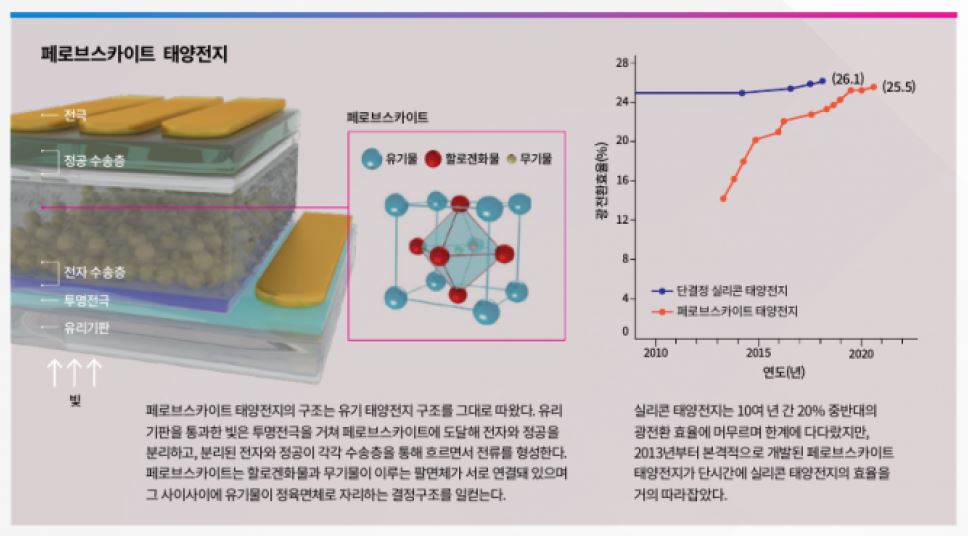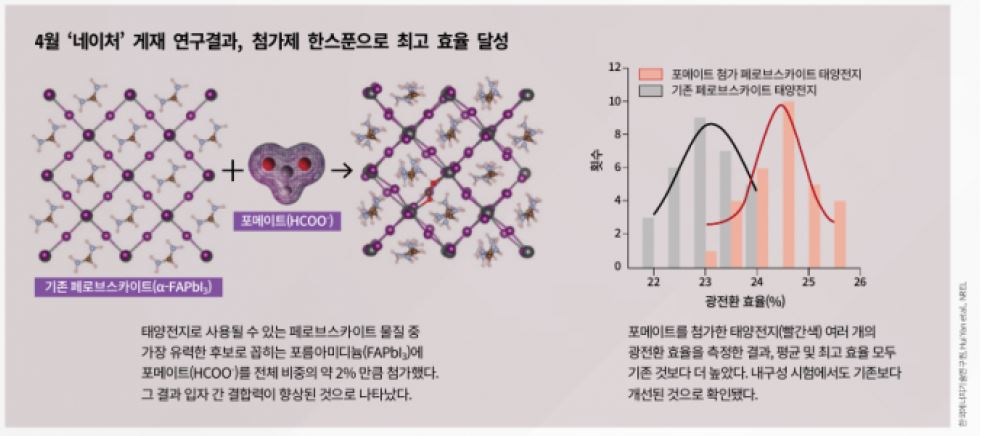KIER STORY
- Date
- 2022-03-16
- Views
- 2,703
Kim Dong Seok, director of Ulsan Next Generation Battery Research and Development Center.
"More than 95 percent of the solar cells currently on sale are made of silicon. However, silicon solar cells are complicated to make. The cheap, easy-to-make perovskite solar cell will soon replace the silicon solar cell. We expect it to be commercialized by 2025 at most.“
Kim Dong-seok, head of the Ulsan Next Generation Battery Research and Development Center at the Korea Energy Research Institute, said the turning point of solar cells is just around the corner. Solar cells, which are leading the expansion of renewable energy worldwide, have a fairly long history. Silicon solar cells were first devised in the 1950s and began to be commercialized in earnest in 1980 with light conversion efficiency exceeding 20%. The light conversion efficiency is a number that shows how much solar energy has been converted into electrical energy. It is the most direct indicator of solar cell performance.
candidate materials most likely to replace perovskite and silicon
Since then, silicon solar cells have been leading solar power generation for more than 30 years, but their limitations have been steadily pointed out. To remove impurities from silicon extracted from sand, high heat of thousands of degrees is required, and subsequent processes are complicated. The light conversion efficiency has also remained in the mid-20% range since the mid-1990s. Attempts have been made for decades to develop next-generation solar cells that overcome these limitations. Since the 2010s, investments in organic solar cells, quantum dot solar cells, and dye-sensitized solar cells have been intensively made, but no technology has shown clear results yet. in the midst of this perovskite solar cell It is attracting attention as a strong candidate for next-generation solar cells.
Finding the best additive, 10,000 samples... achievement of maximum efficiency
Perovskite refers to a substance in which the crystals of a compound are simple cubic, or simply cube-shaped. Among them, perovskite used in solar cells is a compound that combines a specific organic material (A), inorganic material (B), and halide (X) (ABX3). That's why perovskites are sometimes called organic-inorganic hybrid solar cells. erovskite introduced the potential of solar cells in 2009, and it was only after 2013 that full-fledged development began. Kim Dong-seok, head of the center, said, "It has been a long time since organic-inorganic hybrid materials were mentioned, but they were considered unsuitable for solar cells," adding, "In 2013, breakthrough research results (16-17% light conversion efficiency) were released one after another." In particular, Korean researchers, including Ulsan Institute of Science and Technology (UNIST), Korea Research Institute of Chemistry, Sungkyunkwan University, and KAIST, are leading the research on perovskite solar cells around the world.
https://blog.naver.com/energium/222337487028
The Korea Institute of Energy Technology also highly evaluated the possibility of perovskite as a next-generation solar cell and began research with Professor Kim Jin-young of UNIST in 2015. Kim Dong-seok, head of the center, said, "The first target was 15% light conversion efficiency, but now we are developing solar cells that easily exceed the first target and produce more than 25% efficiency." In April this year, Kim's team also published a perovskite solar cell officially certified with 25.2% (0.1cm2 area) of light conversion efficiency in the international journal Nature. Theoretically, the highest photo-conversion efficiency of perovskite solar cells is 31%, but it's even closer to that efficiency. Recently, research has been active on adding some additives to perovskite.
Kim Dong-seok, head of the center, said, "In the early days of the study, we continued to try to change organic, inorganic, or halide itself, but now the main substance itself is in place to some extent, and research is in trend to select appropriate amounts." It's easy to say, but you have to repeat a number of experiments. For example, if UNIST comes up with an idea for an additive candidate substance, Kim's team should combine the additive with perovskite substances in different amounts and conditions, test the resulting solar cell samples one by one, and pick out noticeable efficiency. Kim Dong-seok, head of the center, said, "In many cases, the efficiency decreases when additives are added," adding, "You must have made 10,000 perovskite solar cell samples alone.“
Construction of the world's largest joint-use research center in August 2021
Thanks to these constant efforts, domestic perovskite solar cell manufacturing technology is considered one of the best in the world. However, there are still problems to be solved for commercialization. Optical conversion efficiency has theoretically exceeded 80% of efficiency, but durability is still insufficient. While silicon solar cells have a lifespan of 20 to 25 years, perovskite is easily decomposed and vulnerable to moisture and heat due to its unstable material itself. Although it is a substance that must receive light, it can also be damaged by light.
Moisture can seal off the solar cell itself, but the rest of the problem is finding the right additives. "Efficiency and durability should not be solved separately, but should be overcome at the same time using appropriate additives," said Kim Dong-seok, head of the center. "As research is steadily progressing, it will soon be as durable as current silicon solar cells.“
When perovskite solar cells are commercialized, you can also expect a tandem solar cell that combines perovskite and silicon. "Silicon absorbs light in a wide wavelength band, but perovskite utilizes the short wavelength band much better," said Kim Dong-seok, head of the center. "If the two are combined, it will be a breakthrough turning point for solar energy generation." The Korea Institute of Energy Technology plans to start construction of the world's largest "Solar Company Joint Utilization Research Center" in Daejeon in August 2021 to spur research on perovskite and tandem solar cells.
<o:p></o:p>




